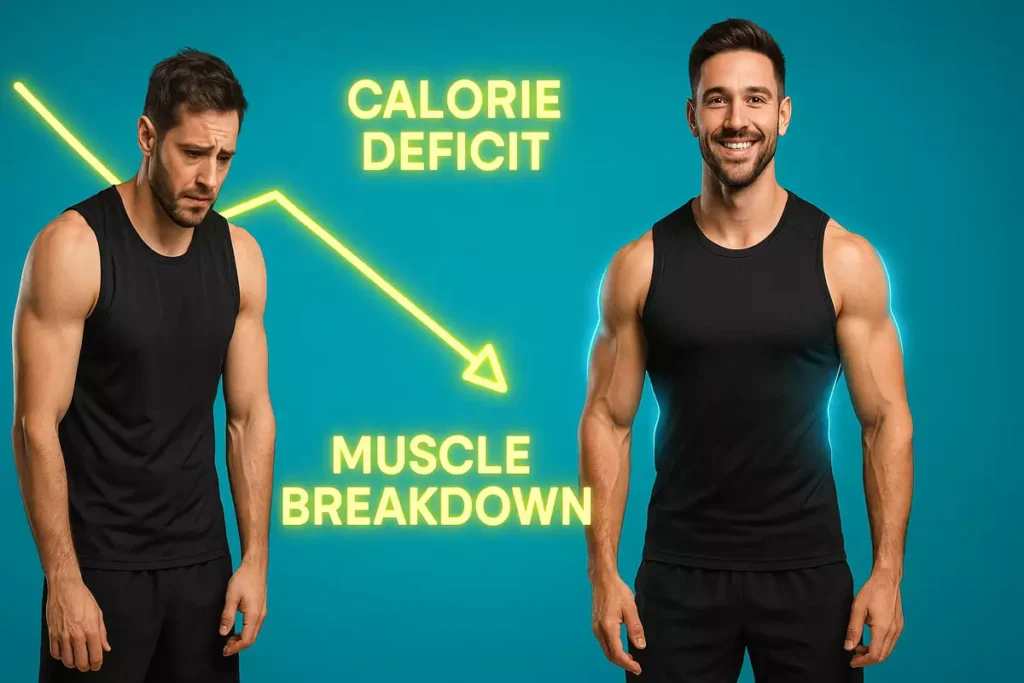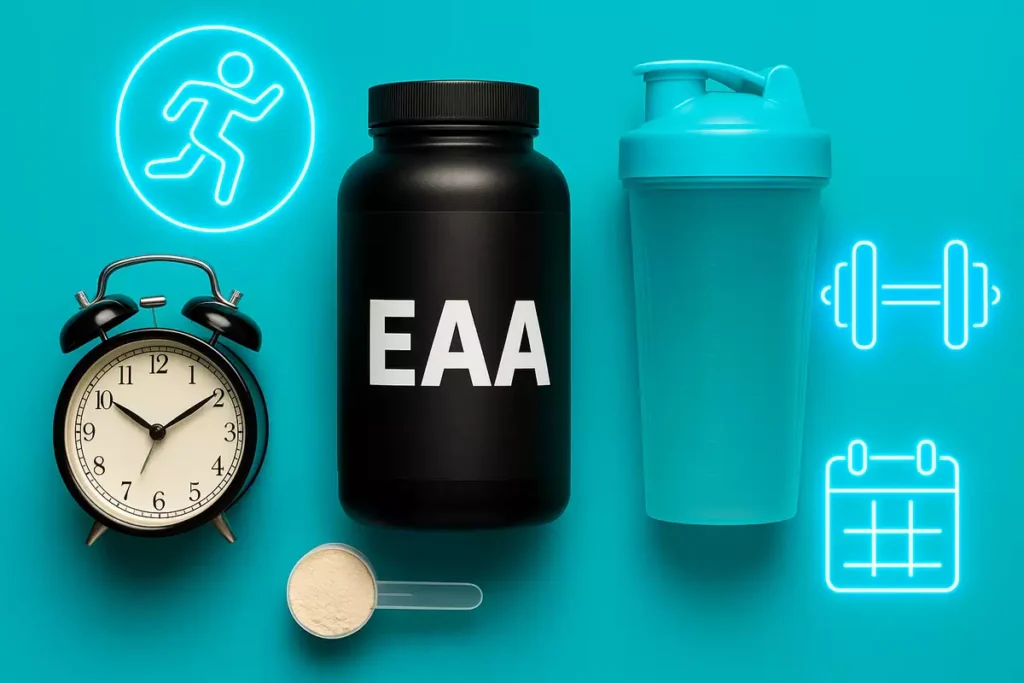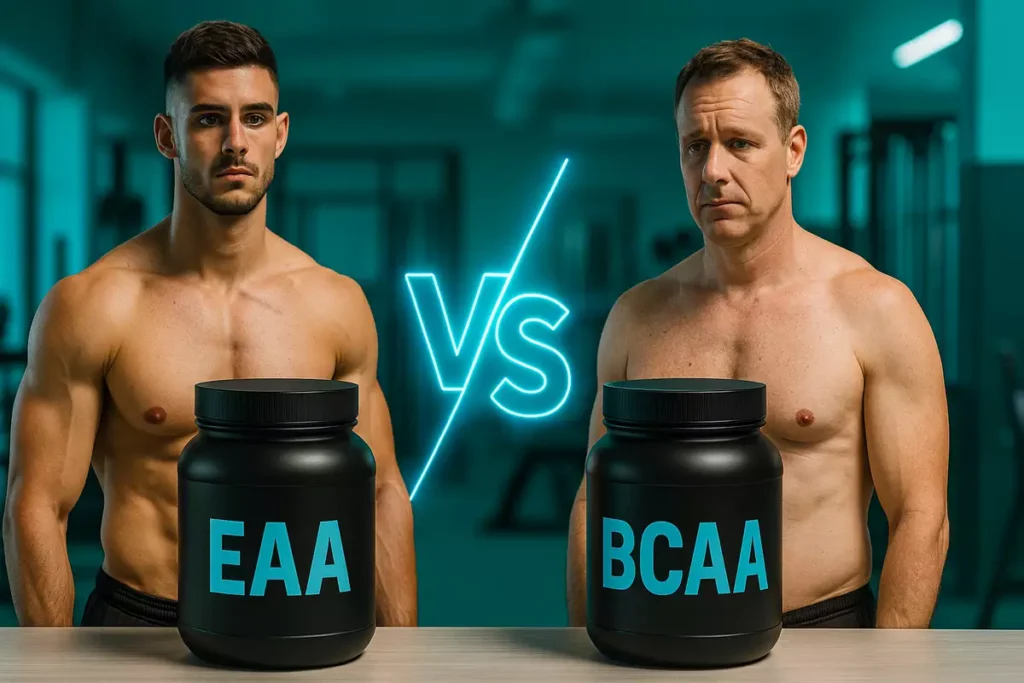Cutting fat is hard enough—losing muscle along the way? That’s a nightmare no lifter wants.
If you’re hitting a calorie deficit, training intensely, and watching your hard-earned size shrink in the mirror, it’s time to get smart.
EAAs (Essential Amino Acids) might be the edge you need to preserve lean mass while cutting. But do they really work—or are they just another hype supplement?
Let’s break it down based on real experience, science, and results from clients around the world.
Table of contents
- Do EAAs Prevent Muscle Loss While Cutting?
- Why Muscle Loss Happens During a Cut
- How EAAs Work to Preserve Lean Muscle
- Best Times to Take EAAs While Cutting
- How Much EAAs Do You Need?
- EAAs vs. BCAAs for Muscle Preservation
- Real-World Results: Who Should Use EAAs During Cutting?
- Final Verdict: Are EAAs Worth It During a Cut?
Do EAAs Prevent Muscle Loss While Cutting?
Yes, they can.
EAAs (Essential Amino Acids) help preserve lean muscle mass during a cutting phase—especially when you’re in a calorie deficit or training fasted.
I’ve personally used EAAs during multiple cutting phases, and the difference in muscle preservation and recovery is real.
They’re not magic, but if you’re dieting hard and training consistently, they become a smart addition to your supplement stack.
To understand how long EAAs stay active in your body, check out this guide: How Long Do EAAs Stay in Your System?
Why Muscle Loss Happens During a Cut

When you’re cutting, your body doesn’t just burn fat—it can also break down muscle for fuel.
This is especially true if your protein intake is low or you’re doing fasted cardio. The body starts tapping into amino acid stores to meet energy needs.
During one of my intense cuts, I noticed a drop in my pull-up strength and overall performance after just a week of reducing calories without supplementing.
That’s when I realized I needed to support my body better—enter EAAs.
How EAAs Work to Preserve Lean Muscle
EAAs trigger muscle protein synthesis, even without food. That’s the game-changer.
Unlike BCAAs, which only provide three amino acids, EAAs offer all nine your body can’t produce on its own.
They help:
- Prevent muscle breakdown
- Speed up recovery
- Support performance when your fuel tank is running low
One of my clients, Lisa from Germany, was prepping for a photoshoot. Her calories were low, and her legs were giving out early in her sessions.
We introduced intra-workout EAAs, and two weeks later, she messaged me saying, “My legs feel strong again, and I’m not nearly as sore!”
Want to dig deeper into how EAAs support recovery? Read this: EAAs for Recovery Time
Best Times to Take EAAs While Cutting

Timing is everything—especially during a cut.
Here’s what’s worked best for me and my clients:
- Fasted cardio: 10g EAAs in water to protect muscle
- Pre- or intra-workout: Especially when carbs are low
- Low-calorie rest days: 5g between meals to minimize catabolism
I usually sip mine during training or early mornings when I’m not eating yet.
Reza, one of my clients in Dubai, used EAAs during keto and retained his muscle while dropping 5 kg of fat in 6 weeks.
Want the full breakdown of when to take EAAs? Don’t miss this: Pre vs During Workout: When to Take EAAs?
And yes—EAAs work even on non-training days. Here’s how: EAAs on Rest Days Guide
How Much EAAs Do You Need?
The sweet spot is 8–12 grams per serving, depending on your body weight and training intensity.
Look for formulas with a high leucine content—around 2.5–3g per serving. Leucine is the trigger for muscle protein synthesis, so don’t settle for low-quality blends.
If you’re also focused on hydration during your workouts, many blends now include electrolytes. See how to combine them here: EAAs + Hydration Mix Guide
EAAs vs. BCAAs for Muscle Preservation

Let’s clear the air: EAAs are superior to BCAAs during a cut.
I’ve tested both myself. BCAAs? Not much of a difference. EAAs? Noticeably better recovery and strength retention.
One of my clients, Marco from Italy, had plateaued mid-cut. He was sipping BCAAs during his sessions but felt drained.
I told him to switch to EAAs. Within two weeks, his recovery improved, and his body fat percentage dropped while strength stayed steady.
Real-World Results: Who Should Use EAAs During Cutting?
EAAs are a great fit if:
- You train fasted or early morning
- You’re in a steep calorie deficit
- You’re prepping for a competition or shoot
- You’re vegan or struggle with appetite
I once coached Emily, a beginner from Canada, who was losing muscle too fast. She wasn’t eating enough protein, and her mood was crashing.
Adding EAAs pre-workout made a massive difference in her energy, strength, and results.
If you’re vegan and looking to grow or preserve muscle, this article is for you: EAAs for Vegan Muscle Growth
Also, if you’re trying to avoid artificial ingredients, check this guide: EAAs Without Artificial Sweeteners
Final Verdict: Are EAAs Worth It During a Cut?

If you’re serious about maintaining muscle while cutting—yes, they’re worth it.
Whole food protein should still be your base. But EAAs give you that extra edge when recovery and muscle preservation matter most.
I don’t use them year-round, but during an aggressive cut? They’re one of my go-to tools.
For me and my clients, EAAs aren’t just hype—they’re a strategic weapon when your training is tough and calories are low.
Try them smartly, and you’ll feel the difference.



Leave a Reply